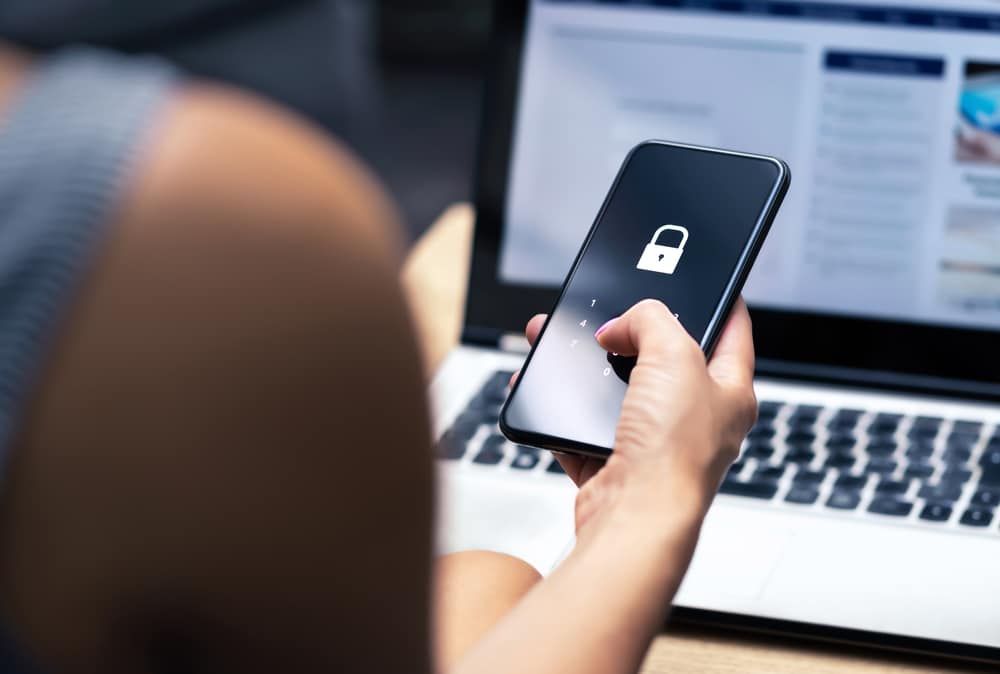What to Do When Your Social Security Card is Stolen
Michelle Wilson - October 11, 2019

Your Social Security Number is wholly unique. Assigned at birth, no one but you has ever had that specific number, and no one but you will ever have that number again. It is a crucial part of your identity within the framework of the United States, and if your Social Security Card gets stolen or misplaced in a mugging, a home invasion, or any other type of robbery which can lead to identity theft, it is essential that you act fast and follow these steps.
Table of Contents
Step 1: Report it to the Police
If you see something, say something – especially if you see it done to yourself. If you are a victim of any crime, you should report it to your local police in any case. If you are the victim of identity theft, you are going to have to freeze your Social Security Number. In order to qualify for a freeze free of charge, you are required to have a copy of the police report.
Why Bother with Step 1?
First of all, a crime is a crime. You should report it, like any good citizen would. That also maximizes whatever limited chances there are of retrieving your stolen wallet or purse – plus a police report means you can qualify for a free freeze on your Social Security Number.
Step 2: Find Contact Information for the Major Credit Bureaus
Once you have the police report, go online and find the contact information for all three major credit bureaus. The three national credit bureaus are TransUnion, Experian, and Equifax. Don’t contact them through email; you’ll have to find their physical mailing addresses and phone numbers on their pages.
Why Bother with Step 2?
Yes, Equifax has been in the news lately for some less than stellar reasons (notably security breaches of their own), but when times are tough you gotta do what you gotta do. It’s like telling a partner when you have an STD: it may not be fun, it may not be great, and it will lead to a long explanation of how you got in this situation, but it’s absolutely the right thing to do.
Step 3: Write Letters to All Three Bureaus
Don’t worry about your penmanship; you can type these letters up. But you must send written requests to each of the three credit bureaus. You will have to include personal information including your legal name in full, your date of birth, your Social Security Number, the address at which you currently live, all previous addresses from the past two years, and the reason for which you need a freeze.
Why Bother with Step 3?
You can’t just find the credit bureaus’ contact information and leave it there; you have to actually contact them. As for all the relevant information, well, you just got your Social Security Number stolen – they need to make sure you’re actually you. It’s far better to have this extra precaution.
Step 4: Call All Three Bureaus
This isn’t a pre-date chat where you’re relegated to just texting; you’re allowed to nag the bureaus with other forms of communication. And since time is of the essence, a little redundancy and repetition won’t hurt, either. Call the same three bureaus (Equifax, Experian, and TransUnion) and ask for a freeze. You will need the same information you provided in Step 3.
Why Bother with Step 4?
You have to act fast – you can’t sit around and wonder why you haven’t heard back from TransUnion or the other two (or all three for that matter), you have to step up to shut it down. Freeze means fast, and there’s no faster way than to call.
Step 5: Get Credit Report Copies
Know where you stand at the start of this problem. It’s important know your credit standing as a reference before any fraudulent purchases, claims, or transactions occur. This won’t stop any fraud, but it is important nonetheless.
Why Bother with Step 5?
It’s like one of those science fair projects you did in middle school – you need to determine the situation before everything changed, before the big new variable came into play. In middle school, that variable was what you put in a fake volcano. Today, that variable is the theft of your Social Security Card. It’s a big difference in scale, but not in terms of the variable.
Step 6: Report to the Internal Revenue Service
Let the IRS (Internal Revenue Service) know that your Social Security card has been stolen. Once they know, they can keep fraudulent tax returns from getting filed in your name. A file with the IRS is also further documentation that your Social Security Number has been compromised. Keep that paper trail growing.
Why Bother with Step 6?
If your Social Security card’s theft isn’t reported immediately, then you could wind up being responsible for any of the fraudulent tax returns or other filings used with your original Social Security number. Be smart, and don’t leave yourself out in the open like that.
Step 7: Report to the Federal Trade Commission
This is part of the paper trail in which you could prove that your identity has been stolen. Reporting this to the FTC (Federal Trade Commission) shows yet another agency that your Social Security Number could in fact start being used for nefarious purposes.
Why Bother with Step 7?
It’s the same situation as with the report to the Internal Revenue Service. It’s good to watch your back; whoever stole your identity certainly won’t.
Step 8: Report the Theft to the Internet Crime Complaint Center
You told the local authorities, now it’s time to get the attention of the FBI – the Federal Bureau of Investigation’s IC3 (Internet Crime Complaint Center) can use national resources to monitor any online use of your stolen information (or distribute it to the relevant authorities).
Why Bother with Step 8?
It was the FBI that got Dillinger and Al Capone – there’s a good chance they’re a decent pair of eyes to keep watch on what goes on through the internet. And if not them, surely they know the right people who can help.
Step 9: Check Your Credit Report Monthly
Checking your credit report is something you just have to do every month now. Despite all the other precautions you’ve taken and the paper trails you’ve started, a good way is to simply see for yourself. If anything seems amiss, make sure to contact both the company with the account as well as the agencies which report the credit.
Why Bother with Step 9?
People’s credit changes all the time – but if things start looking weird and there’s no reason behind it, then there is a reason and you can probably figure out what it is: someone is using your personal information for their own gain. Sometimes constant vigilance is simply the best option.
Step 10: Contact the Social Security Administration
If on second thought you think you just lost your Social Security Card, call the SSA (Social Security Administration) at 1-800-772-1213 to ask for a replacement card. Even if you’re not certain, you may still need to wait years to prove that your identity has been stolen, and in the meantime you will need a replacement card (albeit with the same Social Security Number).
Why Bother with Step 10?
You need a Social Security Card to prove that your Social Security Number is your own (hence why it’s such a big deal if it gets stolen – someone can pretend to be you). If it just gets lost or destroyed somehow, then all you have to do is get a new one. It’s a tedious process, but not so tedious as:
Step 11: Getting a New Social Security Number
This is one of the most difficult and time-consuming actions to do in the United States regarding your identity. You can’t just do it overnight, and you can’t just get a new number to be on the safe side. Along with proving that you are who you say you are (which, despite all your other documentation, is no small feat without an unblemished Social Security Number), you have to do the following:
Decide if Your Credit is at Risk
Identity thieves will often simply sell Social Security Numbers to people who need a job. If they are using your number to cause credit problems, you need to collect that proof.
Apply for a New Social Security Number In Person
This requires filling out an application as well as providing the proof you gathered. You can find your local Social Security Office on their website just by entering your city or zip code into the search bar.
Provide the Appropriate Documents
Along with all of the other information, you have to legally establish your U.S. citizenship, age, and identity through whatever official means possible. This may involve tax receipts, birth certificates, driver’s licenses, and more.
Why Bother with Step 11?
Even with all of the above documents, the Social Security Administration can still turn you down. Yes, this involves living at the SSA’s mercy, but if they deny your application, there’s really nothing you can do but wait for more provable damage to be done.
Pro Tip: Leave Your Card at Home
There are very few situations in which you need to carry your Social Security Card on your person. You don’t need to present it on a regular basis since generally several other forms of identification can work.
If your Social Security number is in fact required, you don’t need to bring your card with you in your wallet or purse to wherever you are going – it could get stolen! In this day and age, you can simply take a picture of your card with your phone, and as long as your phone is protected by a password you can leave your card safe and secure at home or in a safety deposit box.
Pro Tip: Check Your SSES
A final step you can take to avoid identity theft is to look at your SSES (Social Security Earnings Statement) at least once per year to see if there are any indications of fraud or a breach. It may take some time, but it will certainly not take as much time as getting a new Social Security Number.
In Summary
As Dwight Schrute from The Office once said, “Identity theft is not a joke”. And though that line appeared in a TV sitcom, the truth is soberingly serious. Identity theft really is no joke, and while there are simple but effective precautions to vastly reduce (if not eliminate) the threat of identity theft, once it occurs there are steps which you simply must take.
You must report this theft to the police, especially if the theft occurred as part of a break-in or mugging. Those are crimes in and of themselves, and it could theoretically be easier to find information on the physical robbery than on the identity theft.
Freeze your credit with all three major credit bureaus – Equifax, TransUnion, and Experian. By freezing your credit, you are denying identity thieves a chance of opening new lines of credit in your name.
Get copies of your credit reports. This can be the standard by which you would show that changes in your credit score have only started once your Social Security Number was stolen.
Notify agencies like the Internal Revenue Service, Federal Trade Commission, and Federal Bureau of Investigation. Not only will this help broaden the search, but it will start a paper trail proving that your Social Security Number has been compromised.
Call the Social Security Administration to order a replacement card. You will then have to wait and see, checking your credit reports monthly and documenting any proof of fraud. When you finally have proof that identity theft has cost you opportunities at obtaining credit and more, then can you apply for a new Social Security Number.
Stay Secure
CheckPeople provides some of the best online resources for staying secure online and out in the world. Try the Records or People Directory, and see for yourself what makes the site so great!












